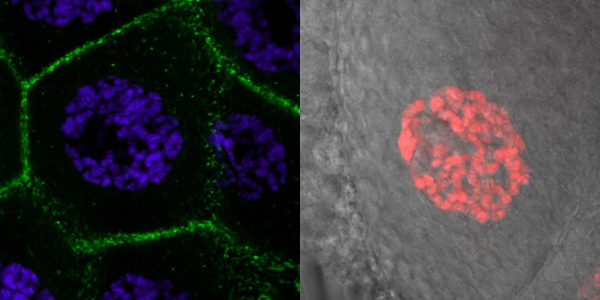Cellular repair program
Excessive noise exposure, certain medications and the aging process can all lead to progressive degeneration of a large portion of sensory neurons; however, a smaller population of sensory neurons consistently survive. We are pursuing the hypothesis that differences in survival capacity between neurons are dependent on the neurons’ ability to effectively mobilize a protective DNA damage response. Noise exposure and cancer chemotherapies can independently damage DNA within peripheral neurons leading to the loss of neural functions (e.g., hearing loss). We have shown that only a small population of peripheral neurons are able to defend themselves by mobilizing DNA repair pathways to repair damaged genes. However, the larger population of neurons do not express DNA repair proteins or fail to appropriately coordinate DNA repair pathways. We suspect that these neurons lack the repertoire necessary to effectively defend their genome beyond basal demands and are therefore a major mediator of sensory impairments.
We are employing a range of molecular, epigenetic and pharmacologic strategies to increase the survival of neurons by improving their capacity to defend/repair their genome. This work is relevant to the development of biomedical approaches aimed at rescuing neurons from cell death processes.

Green = cell borders marked by the F-actin molecule, Blue and Red = DNA molecules coiled into polytene chromosomes